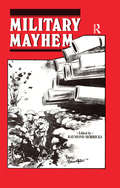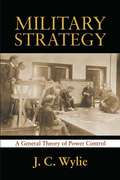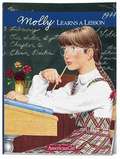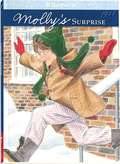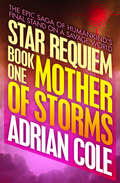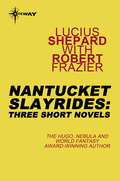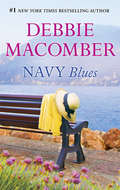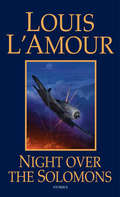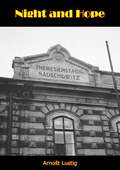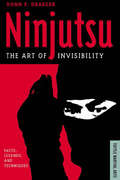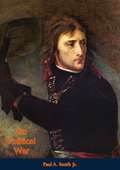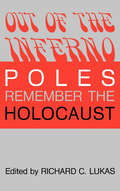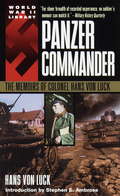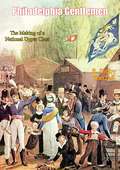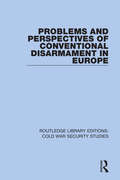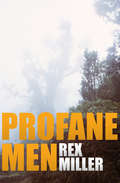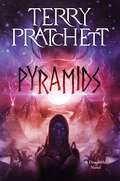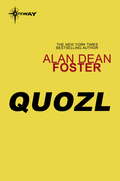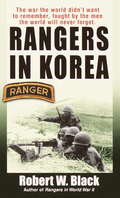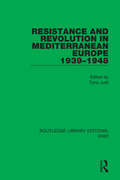- Table View
- List View
Military Mayhem
by Raymond Horricks'Military Mayhem' is an anthology of writings on the British Military by Kipling, Wyndham Lewis, Robert Graves, T.E. Lawrence, Evelyn Waugh, John Betjeman and Ernest Hemingway to name a few.
Military Strategy
by Joseph Caldwell Wylie Jr"No military service can long remain effective without searching self-criticism and continuous re-examination of its own ideas. Wylie, well known in the Navy, is a refreshingly and outspoken individual, thoroughly at home on the bridge of a ship, but equally at home in the semantics of dialectical discussion. He has produced a simple but relevant little work in an attempt to promote order in the discussion of strategy. . . . To the traditional theories of strategy-the maritime theory, the air theory, the continental theory-Wylie adds the 'Mao theory' of wars of national liberation. . . . [This book is] easier to read and understand and basically sounder than the great majority of the involved and tortuous rationalizations of the academic strategists."- New York Times Book Review
Molly Learns A Lesson: A School Story (American Girls #2)
by Valerie TrippFrom the book: "When the teacher announces the Lend-a-Hand Contest to help the war effort, Molly is determined that the third grade girls will plan the winning project. Instead, they choose an idea that Molly knows will never work out. So she talks two friends into planning their own project and keeping it a secret from the rest of the girls in the class. But the secret project turns out to be harder than Molly thought it would be. She begins to worry that it might not win after all and decides to spy on the other girls to see how they are doing. When Molly and her friends get caught peeking in a window, they learn some important lessons."
Molly's Surprise: A Christmas Story (American Girls #3)
by Valerie TrippThe McIntire family faces a disappointing Christmas. Dad is off at war in England, Molly's grandparents can't come for the holidays, and it looks like there won't be many exciting presents. Worst of all, the family hasn't heard from Dad for a long time, and they're worried. <P><P>But Molly decides they should make their own merry Christmas-a Christmas filled with the kind of unexpected surprises that Dad would make. Thanks to Molly, the best surprise of all is waiting for the McIntires on Christmas morning.
Mother of Storms (Star Requiem #1)
by Adrian ColeThe epic Star Requiem fantasy series begins on an inhospitable world where elemental gods plan the destruction of the human race. It is on this planet, where only the Windmasters can summon the devastating power of rain, gale, thunder, and lightning, that the last surviving remnants of humankind have come, fleeing the destruction of their empire at the hands of the alien Csendook. And it is here the human race will be resurrected...or exterminated. The sorcerers of this barbaric, inhospitable world have vowed to cleanse Innasmorn of the uninvited "abomination." And somewhere in the swirl of the dimensions--eons distant but as near as a word of power--the relentless Csendook destroyers scent human blood on the galactic wind. "Adrian Cole has a magic touch." -- Roger Zelazny Don't miss the entire Star Requiem quartet: Mother of Storms, Thief of Dreams, Warlord of Heaven, Labyrinth of Worlds
Nantucket Slayrides: Three Short Novels
by Lucius ShepardNantucket Slayrides contains the two short novels "How the Wind Spoke at Madaket" and "Nomans Land" by Shepard and Robert Frazier's "The Summer People".
Navy Blues
by Debbie MacomberAvailable as an ebook for the very first time! NAVY BLUES, the second in Debbie Macomber's popular series of Navy romances. She needed just one night with him... Despite her ex-husband's stubbornness, Carol Kyle knew he'd be the perfect man to father the child she so desperately wanted. Yet she also realized that this strong, honorable man would never allow his child to be raised without a father. So Carol needed to plot, to plan, to maneuver, to seduce Steve into her bed one last time... And then once more. Still, the passion when they were together had never been the problem; it was the absences that tore them apart. Had they grown enough to risk trying again--especially when Carol's plan seemed about to work?
Night Over the Solomons
by Louis L'AmourThey're freelance pilots and full-time troubleshooters for democracy. They're men like Steven Cowan, Mike Thorne, and Turk Madden who face danger every day of their lives and fight like tigers for what they believe in. With the world on the brink of war, they're on the front lines, wherever there's action. From the dangerous South Seas islands, to steaming South American jungles, to the other islands of Japan, you'll find these man ready to fight the enemies of freedom--in a battle to the death.From the Paperback edition.
Night and Hope (Quartet Encounters)
by Arnost Lustig George TheinerFirst published in 1962, Night and Hope is a collection of interrelated short stories by a young Czech writer who was a boy in the Terezín concentration camp near Prague during the war. They have already been received with great acclaim abroad and they now make their appearance for the first time in this country. They reveal what it was like to live in a sealed town which was in fact a reception station for the gas chambers of Auschwitz. A guard thrashes a poor old woman on the counter of her little shop and each are curiously resigned to their roles of giving and receiving degradation. Little boys play in the streets and are quietly regretful that they won’t grow up and wear fine clothes. A guard’s wife and her coffee-party friends stroll round the ghetto to collect anything that catches their eye—a wedding-ring, pathetic clothes....Arnošt Lustig’s stories are a new and vivid focus on this fearful tragedy as it affected the private individual. They are written with restraint yet nothing is glossed, and they take their place amongst the very best writing to have come out of the shambles of Hitler’s ‘Jewish Question’.“Arnošt Lustig has succeeded in putting truth into a poem. Nothing in art could mean more than that. His style is sober and modern, his sentence carries all attributes of that which connects prose with poetry and makes it obvious how slight and unperceivable the borderlines between genres.”—L. Askenazy, Literarni Noviny (Prague).“Each tale has a genuine unity of its own and is a small work of art in its own right. No one reading them could ever feel that they were only stories.”—The Times Literary Supplement (London).“No writer in Europe, in the East or in the West, has expressed as much truth about the time of the holocaust as Arnošt Lustig.”—Maariv (Tel Aviv).“Outstanding stories.”—The Bookman, London
Ninjutsu The Art of Invisibility
by Donn F. DraegerNinja-the very word inspires awe and terror in equal measure. Master of espionage and assassination, stealth and concealment, the ninja's ability to move swiftly and silently gave rise to popular legends of amazing exploits, invincibility and supernatural powers.In Ninjutsu: The Art of Invisibility, Donn Draeger draws back the veil of mystery shrouding the arcane practices of feudal Japan's shadow warriors. Stripping away myth and exaggeration, Draeger reveals the secret tactics, exotic weapons, tricks and disguises that earned the ninja a reputation as history's most feared secret agents.
On Political War
by Paul A. Smith Jr.Warfare is often defined as the employment of military means to advance political ends. So understood, conventional warfare may be seen as one military means to ensure national survival and pursue national advantage. Another, more subtle, means—political warfare—uses images, ideas, speeches, slogans, propaganda, economic pressures, even advertising techniques to influence the political will of an adversary.Through political warfare, a nation can express its vision of the world as well as its sense of what particular role it intends to play within the international setting. Major political warfare campaigns often target an adversary’s populace as a whole. In an effort to isolate an adversary, they may address that adversary’s allies and neutral or nonaligned nations as well. And, working through client states, a nation may influence a broad range of events without actually involving itself directly in conventional armed conflict.In this study of political warfare in the Western world, Paul A. Smith, Jr, traces the development of political warfare since antiquity. His grasp of history, literature, art, politics, and armed conflict comprehensively informs his contention that political warfare is often as crucial to national survival as the massing of great land, sea, and air power. Now that the Soviets’ 40-year campaign of aggression, intimidation, and hegemony is in apparent retreat and the world is increasingly beset by low-intensity conflict and struggles for economic domination, political warfare will be at the forefront of our national security agenda.
On the Waters of the World: The Story of the Meloon Family
by Robert G. FloodIn the closing months of World War II, a Florida-based boat-building firm built hundreds of assault boats under an "impossible" deadline and helped General Dwight Eisenhower defeat Hitler's armies along the Rhine. The feat drew the praise of the U.S. Government and the attention of National Geographic. Today that same firm, Correct Craft of Orlando, Florida, builds the Ski Nautique, considered by many the world's foremost water ski towboat. Behind the genius of Correct Craft, America's oldest family-owned boat building firm, lies the inspiring story of the Meloon family and their commitment to honor God in their business decisions. They kept that commitment, even in times of hardship, and it led them to risk bankruptcy rather than compromise the firm's Christian-based business ethic. Roaming from Cypress Gardens to Sea World, from professional water ski tournaments to nations abroad, these pages tell the story of one family's remarkable impact "on the waters of the world."
Out of the Inferno: Poles Remember the Holocaust
by Richard C. Lukas“Moving testimonies recount the sadism, mass murders, deportations and imprisonment which Poles suffered at the hands of Hitler’s invading army.” —Publishers WeeklyRichard Lukas’s book, encompassing the wartime recollections of sixty “ordinary” Poles under Nazi occupation, constitutes a valuable contribution to a new perspective on World War II. Lukas presents gripping first-person accounts of the years 1939–1945 by Polish Christians from diverse social and economic backgrounds. Their narratives, from both oral and written sources, contribute enormously to our understanding of the totality of the Holocaust. Many of those who speak in these pages attempted, often at extreme peril, to assist Jewish friends, neighbors, and even strangers who otherwise faced certain death at the hands of the German occupiers. Some took part in the underground resistance movement. Others, isolated from the Jews’ experience and ill-informed of that horror, were understandably preoccupied with their own survival in the face of brutal condition intended ultimately to exterminate or enslave the entire Polish population. These recollections of men and women are moving testimony to the human courage of a people struggling for survival against the rule of depravity. The power of their painful witness against the inhumanities of those times is undeniable.“Lukas presents a selection of oral and written memoirs of some 60 Polish men and women who lived through the German occupation of Poland in World War II.” —Library Journal
Panzer Commander
by Hans Von LuckA stunning look at World War II from the other side...From the turret of a German tank, Colonel Hans von Luck commanded Rommel's 7th and then 21st Panzer Division. El Alamein, Kasserine Pass, Poland, Belgium, Normandy on D-Day, the disastrous Russian front--von Luck fought there with some of the best soldiers in the world. German soldiers.Awarded the German Cross in Gold and the Knight's Cross, von Luck writes as an officer and a gentleman. Told with the vivid detail of an impassioned eyewitness, his rare and moving memoir has become a classic in the literature of World War II, a first-person chronicle of the glory--and the inevitable tragedy--of a superb soldier fighting Hitler's war.
Panzer Commander the Memoirs of Colonel Hans Von Luck
by Hans Von LuckVivid descriptions of the soldiers he fought against and their national characteristics-Poles, Frenchmen, the British, the Red Army, Americans-along with equally vivid descriptions of the terrain he fought in ... Marvelous vignettes about the people he encountered.
Philadelphia Gentlemen: The Making of a National Upper Class
by E. Digby BaltzellAlthough primarily a Proper Philadelphia story that starts with the city's Golden Age at the close of the eighteenth century, this classic study of an American business aristocracy of colonial stock and Protestant (largely Episcopalian) affiliations is also an analysis of how fabulously wealthy, nineteenth-century family founders in Boston, New York, and Philadelphia supported a series of class-creating institutions outside the family. These institutions included: the New England boarding schools; Harvard, Yale, and Princeton; and urban men's clubs and suburban country clubs. They produced, in the course of the twentieth century, a national, intercity, upper-class way of life. Philadelphia Gentlemen shows how this class reached its peak of power and influence in America on the eve of the Second World War.“Writing both as a Philadelphian and a sociologist, Mr, Baltzell has dissected the upper-class structure of his native city with results as fascinating as they are illuminating.”—John Barkham, Saturday Review Syndicate“In constructing a picture of the proper Philadelphian. Baltzell has made use of masses of printed material and some manuscript sources, there is little on Philadelphia and Philadelphia families which he has neglected....a gold mine of information.”—American Historical Review“Philadelphia Gentlemen says important things about class and power in America, and says it in ways that will interest and fascinate; both sociologists and laymen.”—Seymour Martin Lipset“This is a very, very important book.”—The New York Times Book Review
Problems and Perspectives of Conventional Disarmament in Europe (Routledge Library Editions: Cold War Security Studies #38)
by United Nations Institute for Disarmament Research UNIDIRThis book, first published in 1989, explores the ideas, proposals and counterproposals surrounding the thorny issue of Cold War conventional force disarmament in Europe. European nations acknowledged the need to reduce military tensions, but divergences remained as to the concrete ways and means for the attainment of the security objectives on the basis of mutually acceptable reductions of their respective forces. A UNIDIR-organized conference examined these issues, and presented here are the conference reports and findings, together with speaker responses.
Profane Men
by Rex MillerProfane Men brings the dark, creative, visionary energy of Slob, Chaingang, and other works by Rex Miller to a story set in Vietnam during the late 1960s. There have been many tales written about that troubled and troubling era, and Miller's popular fiction work is clearly informed by personal experience relating to the war. In fact, this novel is filled with apparently autobiographical touches (the central narrator character has a developing career in broadcast radio, among other things). A rootless young man drifting through life faces the likelihood of being drafted and decides to choose his own destiny, seeking a way to avoid becoming cannon fodder. Unfortunately for him, he finds himself thrust into some of the worst corners of Vietnam, working with a team of assassins tracking a pirate radio broadcaster who seems to be supplying intelligence to the Viet Cong. And then things get complicated . . .
Pyramids: A Discworld Novel (Discworld #7)
by Terry PratchettThe seventh book in the award-winning comic fantasy Discworld series by Terry Pratchett.Unlike most teenaged boys, Teppic isn't chasing girls and working at the mall. Instead he's just inherited the throne of the desert kingdom Djelibeybi—a job that's come a bit earlier than he expected (a turn of fate his recently departed father wasn't too happy about either).It's bad enough being new on the job, but Teppic hasn't a clue as to what a pharaoh is supposed to do. After all, he's been trained at Ankh-Morpork's famed assassins' school, across the sea from the Kingdom of the Sun. First, there's the monumental task of building a suitable resting place for Dad—a pyramid to end all pyramids. Then there are the myriad administrative duties, such as dealing with mad priests, sacred crocodiles, and marching mummies. And to top it all off, the adolescent pharaoh discovers deceit and betrayal—not to mention a headstrong handmaiden—at the heart of his realm.Sometimes being a god is no fun at all. . . .
Quozl
by Alan Dean FosterThe Quozl knew they'd love the third planet from the sun.But it never occurred to them that anyone lived there . . .
Rangers in Korea: The War the World Didn't Want to Remember, Fought by the Men the World Will Never Forget
by Robert W. BlackA generation before Vietnam, the war for Korea raged. It was as rough and dirty a war as has ever been fought--a war small in history, but very large to the men who waged it. . . . In the Korean War, one group above all others distinguished itself, a small elite band who volunteered for action behind enemy lines. They were the men of the U. S. Army's legendary Rangers. They succeeded in making the first combat jump in Ranger history, destroying enemy headquarters, and inflicting the first defeat on Communist Chinese forces while suffering a disproportionate number of casualties. This is their story, told here for the first time--based on military records, interviews with survivors, and the author's personal experiences as an American Ranger in the Korean War.
Red Army
by Ralph PetersFrom the cockpit of a MIG to the foot soldiers and tankers on the scarred, bloody battlefields to the four-star general commanding the attack, Red Army is a riveting portrayal of modern war-- and of human strengths and weaknesses. Seen entirely through Russian eyes, this extraordinary novel is destined to become a classic.
Red Phoenix
by Larry Bond Patrick LarkinA novel of the second Korean war by one of the authors of Red Storm Rising.
Resistance and Revolution in Mediterranean Europe 1939–1948 (Routledge Library Editions: WW2 #27)
by Tony JudtThis book, first published in 1989, is the first general study of Communism in Mediterranean Europe during and immediately after the war. It sheds light on the origins of Europe’s Cold War East-West divide and probes the common and conflicting interests of the Soviet Union with the separate national and Communist resistance movements. It explores controversial issues including Stalin’s intentions in post-war diplomacy, Communist attitudes to Nazi collaboration in France, and the origins of the Cold War. The decade following the outbreak of the war saw the transformation of society through armed conflict, national resistance and political revolution. The relationship between resistance to Fascism and occupation, on the one hand, and profound social and political changes on the other, was especially marked in southern Europe. In France and Italy, Communist parties emerged as prominent participants in post-war governments; in Yugoslavia the Communist partisans seized full power and effected a social revolution; while a similar attempt in Greece led to a long and bitter civil war.
Return to Honor
by Doug BeasonThe President of the US is seized on Air Force One. An American spy satellite pinpoints the plane in a remote and hostile African country...
